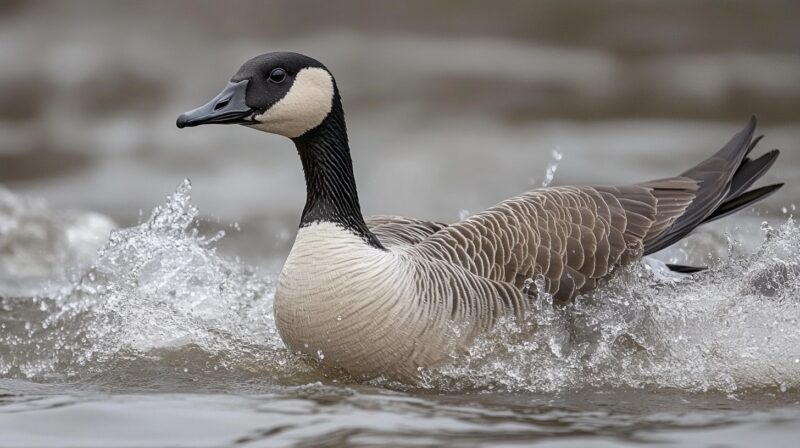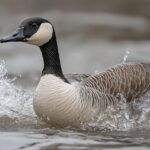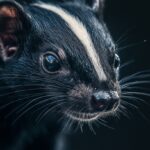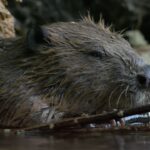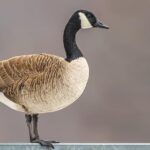The Canada Goose is one of the most recognizable birds in North America, known for its distinctive honk and impressive V-shaped migration formations.
While often seen gliding across lakes or foraging in open fields, there’s much more to this iconic species than meets the eye.
From their complex social behaviors to their remarkable ability to adapt to various environments, Canada Geese play a crucial role in ecosystems across the continent.
- Strong neck
- Short tail
- Webbed feet
- Powerful wings
- White patch on each cheek
- Very good eyesight
- Long black neck
- Excellent hearing
Season by Season
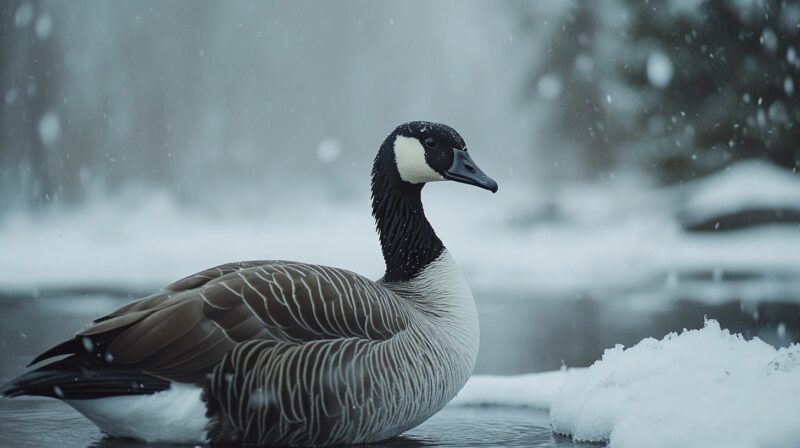
| Season | Key Events |
|---|---|
| Spring | Geese return, lay eggs, goslings swim, parents molt. |
| Summer | Chicks grow, learn to fly, families move for food. |
| Fall | Migrate south, form flocks, fly in V formation. |
| Winter | Rest in Central/Eastern US, build fat for spring. |
Habitat
The Canada Goose is highly adaptable and can be found thriving in a wide range of habitats across North America. These birds are just as comfortable in densely wooded areas as they are in open landscapes without a single tree in sight.
Their habitats range from the vast prairies and open plains of Western Canada to the coastal flatlands of the Arctic, where the summer sun barely dips below the horizon.
Canada Geese are also known to inhabit more rugged, mountainous regions, demonstrating their ability to adjust to diverse environments. When it comes to nesting, proximity to water is key.
In the spring, a mated pair will seek out a site near a body of water such as a lake, marsh, or pond, which offers the necessary resources for raising their young.
Ideal nesting spots often include small islands or secluded shorelines, where the birds are somewhat protected from predators.
These geese are also known to take advantage of human-made environments, sometimes nesting in urban parks, golf courses, and even rooftops if they provide access to water.
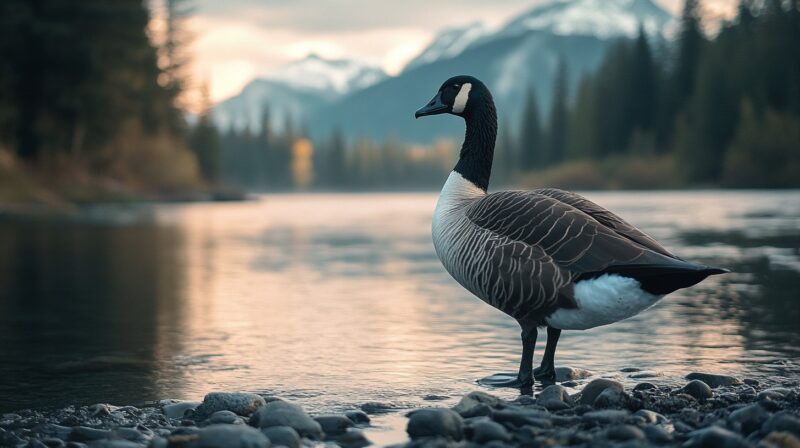
Nesting
The nesting process of the Canada Goose is a remarkable and well-coordinated effort, primarily led by the female.
After selecting a safe and often secluded location near water, such as a pond, lake, or marsh, the female goose lays a clutch of 4 to 6 creamy-white eggs.
These nests are typically lined with down feathers and grasses to provide warmth and protection for the developing eggs.
Incubation, which is solely the responsibility of the female, lasts between 25 to 30 days. During this period, she remains highly vigilant, rarely leaving the nest except for brief moments to feed.
The male goose plays a crucial role by standing guard nearby, ready to defend the nest from potential predators.
One of the most fascinating moments occurs just before the goslings are ready to hatch. Tapping sounds can be heard from within the eggs as the baby geese begin to break through the shell. This process, known as “pipping,” signals that hatching is imminent.
Once hatched, the goslings are covered in soft down and are surprisingly active.
The Canada Goose in its Nest
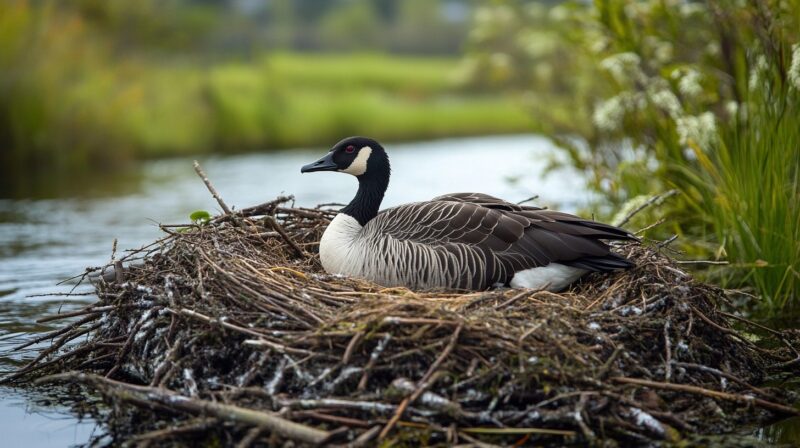
The nesting phase is a critical and carefully orchestrated period for the Canada Goose, where both the male and female play distinct but equally important roles.
While the female is tasked with brooding the eggs, maintaining their warmth, and ensuring their safe development, the male assumes the role of protector.
Positioned nearby, often on high alert, the male stands guard throughout the incubation period, constantly scanning the surroundings for potential threats.
When danger approaches, be it a predator like a fox, raccoon, or even a curious human, the male goose responds with a series of shrill, loud honks that serve as a warning to both the intruder and the female.
In more serious situations, the male will go beyond vocal warnings, launching into a defensive display.
With outstretched wings, hissing, and aggressive wing-beating, the male may charge at the perceived threat in an effort to protect the nest.
The construction of the Canada Goose nest is an impressive process, often taking place in well-chosen, secluded locations near water.
- Small islands
- Marshy regions
- Edges of lakes and ponds
These locations offer proximity to food sources and some degree of protection from ground predators.
The nest itself is a carefully crafted structure made from a variety of natural materials found in the surrounding environment. The female gathers twigs, dried grasses, and reeds from the marshland or nearby vegetation, using them to create a sturdy foundation.
These materials help to insulate the eggs from the cold ground, offering a soft and dry surface for incubation.
Family Life

Family life for Canada Geese is a well-structured and highly organized affair, with both parents playing active roles in the upbringing of their young.
The goslings, or baby geese, are born highly capable yet vulnerable, and the first summer of their lives is a critical period for learning essential survival skills.
During this time, the goslings remain close to their parents, who guide and protect them at every step. One of the primary lessons the young geese learn is how to find food. Canada Geese are herbivores, and the goslings are taught to forage for grasses, aquatic plants, roots, and seeds.
Their parents lead them to rich feeding grounds near the water, where the young geese learn to recognize which plants are safe to eat and how to dive or dabble in the water for submerged vegetation.
Beyond finding food, survival hinges on the goslings’ ability to identify and respond to dangers in their environment. The world is full of predators, and from a very young age, Canada Geese are trained to recognize the signs of these threats.
At the first sign of danger, the parents will lead the goslings into the water, where they are safer from ground-based predators.
Food
The diet of the Canada Goose is highly versatile and well-adapted to the diverse environments in which it lives. These large waterfowl are primarily herbivores, consuming a wide variety of plant matter to meet their nutritional needs.
On average, an adult Canada Goose eats about 250 grams (around half a pound) of food per day, though this can vary depending on the availability of food and the season.
One of the most remarkable features of the Canada Goose is its long, flexible neck, which allows it to forage for food in places other animals can’t easily reach.
The adaptability is especially useful when foraging for aquatic vegetation.
The ability to feed underwater enables the goose to access nutrient-rich vegetation that other species might overlook, such as water lilies, algae, and pondweed.
If you love finding new facts on diverse animals, read our blog on fun facts about Bengal tiger!

